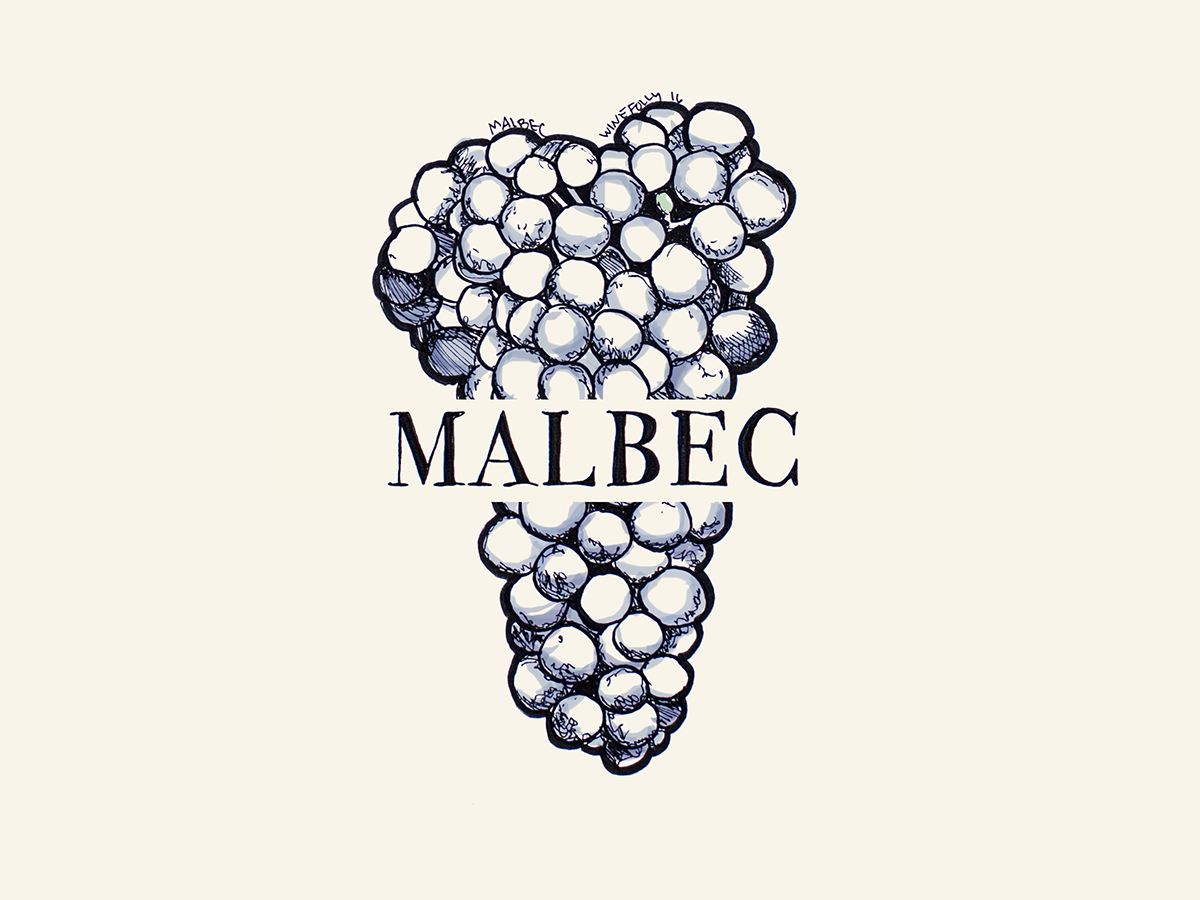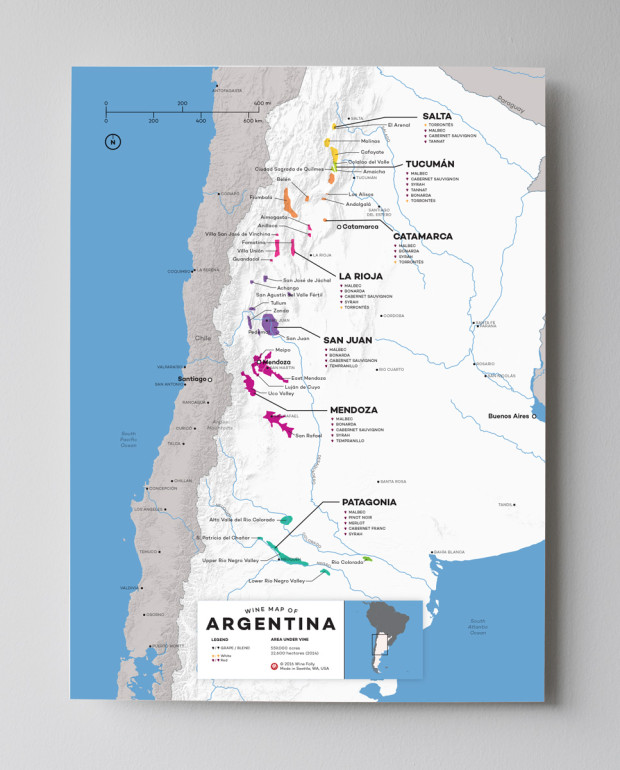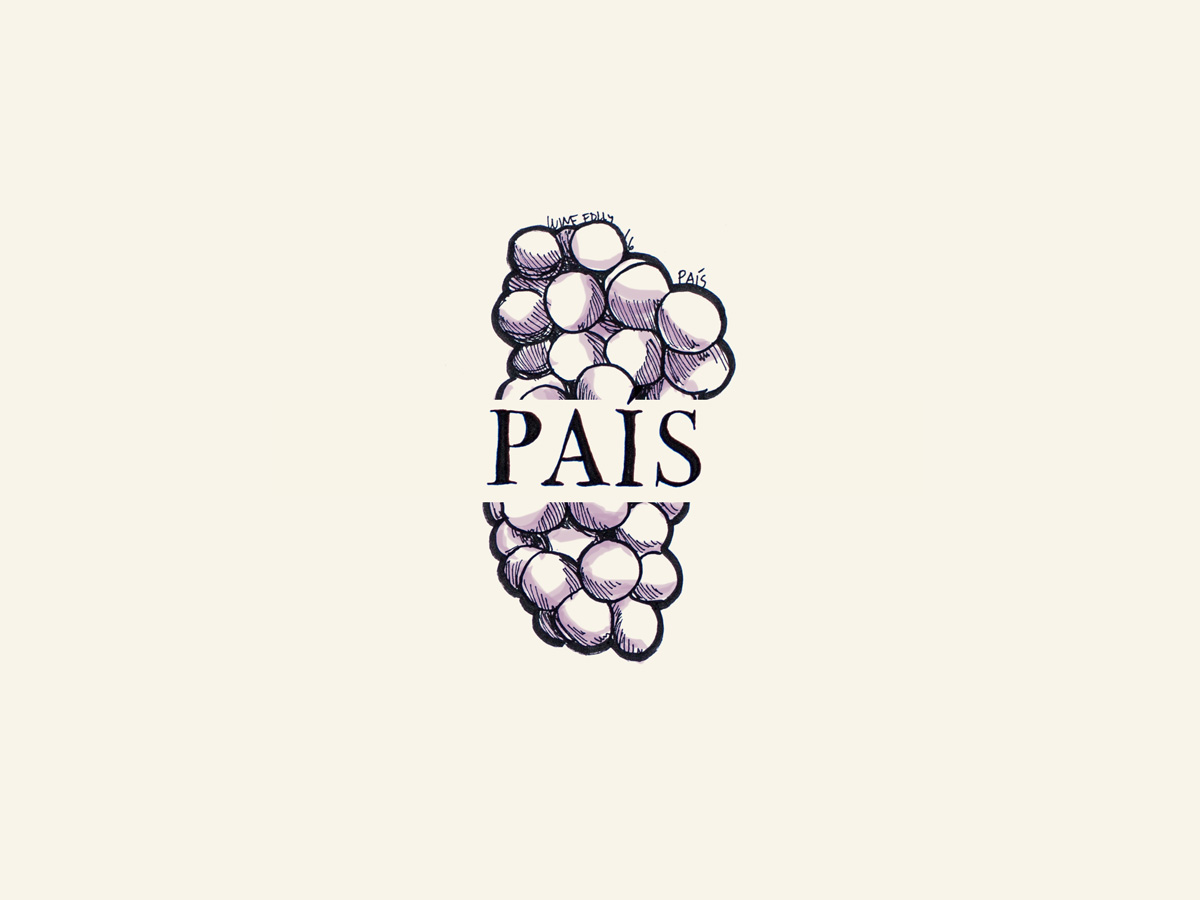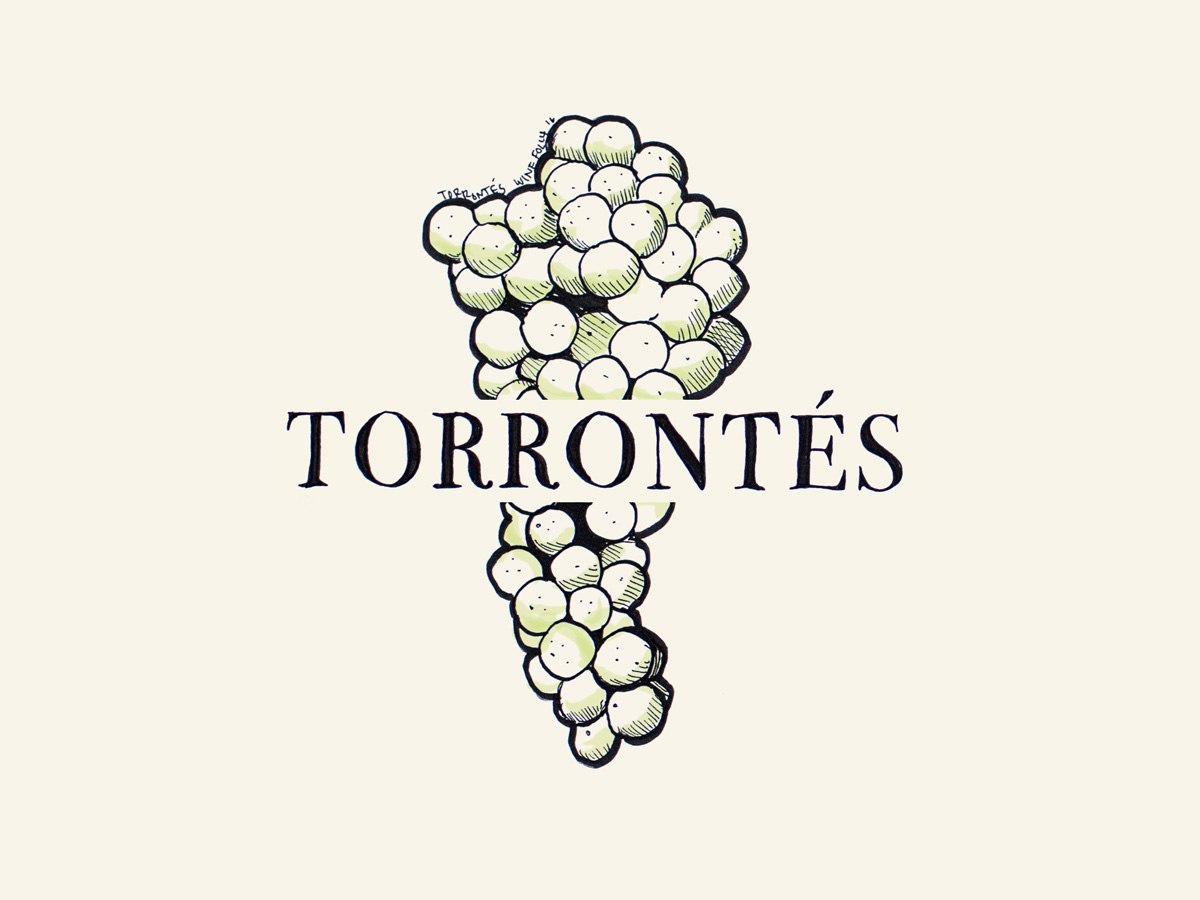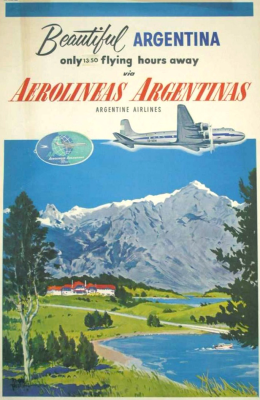While you’ll find all the usual suspects (Cabernet Sauvignon, Chardonnay, Sauvignon Blanc etc…) in South America, there are a handful of lesser known varieties that have taken on a uniquely South American identity.
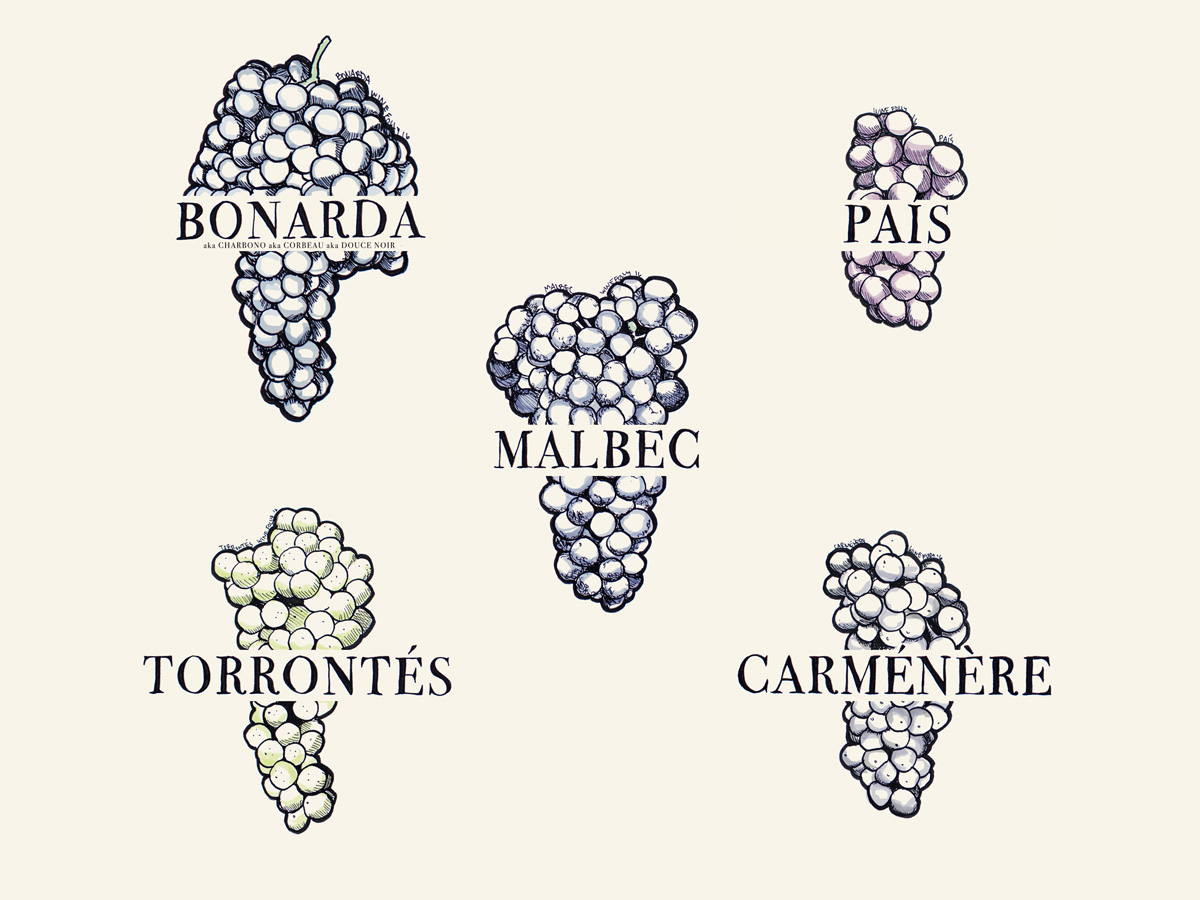
You might already be intimately familiar with Malbec, but others (like País) are only now making a splash outside of the Southern Hemisphere.
Five South American Wine Varieties to Know
Malbec
Clearly the poll-topper for the most famous variety in South America, Malbec is the golden child of the continent. 20 years ago no one was drinking Malbec, not even the French (at least in quantity); but since its boom in Argentina, everyone is drinking the grape again–including the French. Over-marketed for over a decade as the top twenty dollar pop (at least for the black-and-oaky drinker), Argentine Malbec is all grown up – and it’s turned out to be no one-hit-wonder. You’ll find a range of Malbec styles shimmying their way into your glass. Here are three to keep your eye on:
Old Vine Malbec: Viñas Viejas
Some might market old vines as 30–40 years, but the really old vine Malbec is well over 100 years old in some cases. Malbec as a arrived on the continent over 150 years ago, where the first plantations were most likely in Southern Chile near the port city of Concepción. It’s in this area where you’ll find Malbec vines over a century-old making wild and floral Malbec with silky-smooth tannins and fresh acidity (easier-going and more savory than the lush Argentine style we all know well). Wines are often made into a field blend with other local old vine varieties. Besides Southern Chile, there are a few 80+ year-old Malbec vines in Argentina (particularly in Mendoza) that produce exceptionally balanced wines.
- Key Regions: Argentina – Maipu, Lujan de Cuyo; Chile – Itata (San Rosendo), Maule, Bio Bio
- Names to look out for: Argentina – Finca Mirador by Achaval Ferrer , Malbec de los Angeles; Chile – Clos de Fous , Tinto de Rulo , De Martino
Fruity, everyday Malbec
Argentine Malbec took the supermarket shelves by storm with good reason: it can offer a lush, concentrated wine with real gluggability at an easy price point. It’s effectively Napa Cabernet, but generally at a much better price-to-quality ratio, since the cost of farming is far lower in Argentina, in particular. You’ll find plenty of solid Malbec wines with plummy dark fruit flavors and a bit of oak-aging structure from the warmer valleys of Argentina and Chile. Expect to spend $10 upwards.
- Key Regions: Argentina – Lujan de Cuyo, Maipu, Neuquen, San Juan; Chile – Colchagua, Cachapoal.
- Names to look out for: Argentina – Bodega Norton , Santa Julia , Humberto Canale ; Chile – Viu Manent , Caliterra .
Top dollar, Top Uco Malbec
Some of the very top Malbecs in South America are coming from Argentina’s Uco Valley. After over a decade of intense soil studies and experiments between cement and oak-aging, many producers make examples of world class wines that focus on elegance and length, expressing the highly sought-after savory-herbal and violet notes found in Malbec. These sophisticated bottles will be over $50.
- Key Regions: Gualtallary, Paraje Altamira, Vista Flores (within Uco Valley)
- Names to look out for: Zuccardi , Zorzal , Catena Zapata , Monteviejo , Tinto Negro .
Argentina Wine Map
Find Argentina’s many wine regions on a map.
Argentina Wine Map
Carménère
Another well-travelled French variety, Carménère found its second home in Chile where it is now most widely grown. Chile’s adoption of the variety wasn’t intentional though – it was mistakenly brought over as Merlot and grew all over the country under the guise of its borrowed identity until intrepid ampelographer, Jean Michel Boursiquot, discovered in 1994 that it was actually the long lost French variety, Carménère.
Although notoriously difficult to pronounce, Carménère is one easy drinker. With fleshy fruit and an attractive herbal spice, it goes well with many different dishes from BBQ short ribs to corn tamales. Styles range from plummy and opulent with sweeter oak aging, to fresher versions with wild herb and bell pepper notes.
- Key Regions: Colchagua (Apalta), Alto Cachapoal, Aconcagua, Maipo.
- Names to look out for: Lapostolle , Montes , Santa Carolina , Errazuriz , Valle Secreto , Viña Ventisquero .
País aka Criolla, Mission
One of the first grapes to be planted in the Americas, País (Criolla in Argentina, or Mission in the US) was also the most widely planted grape variety in South America until the vinicultural French revolution took place a couple hundred years later. Floundering below the line of recognition for centuries, the old Pais vines were condemned to cheap table wine and largely abandoned. In the last few years however, winemakers and viticulturists in Chile have rediscovered this variety and are making some interesting wines from the centenarian vines.
Rustic, pipeño País
At the heart of the revival of Pais is a revival of ancestral winemaking techniques, which wine hipsters call “natural winemaking”. With minimal intervention in the winery (or often garage), organic and dry-harvested old vines, these wines are usually small production and available in specialist natural wine merchants. Funky, earthy and often surprising, they show rustic fruit flavors and sometimes floral notes.
- Key Regions: Itata, Maule, Bio Bio.
- Names to look out for: Luis Antoine Luyt , El Huaso de Sauzal , Cacique Maravilla .
Modern, Beaujolais-style País
Taking on a beaujolais nouveau-style, modern País wines use carbonic maceration to capture fresh fruit flavors and a light, crisp finish. These are perfect quaffers to drink chilled beside the pool. Along the same lines is a dabble into sparkling pink País – a light and fruity bubbly made in the traditional champenoise method offering excellent value for money.
- Key Regions: Secano Interior, Itata, Maule, Bio Bio.
- Names to look out for: J. Bouchon , Marques de Casa Concha .
Chile Wine Map
See Chile’s many wine regions on a map.
Chile Wine Map
Bonarda aka Charbono, Corbeau, Douce Noir
If País was the most-planted red variety in Chile, Argentina’s equivalent would be Bonarda. Before the Malbec boom, Bonarda was the most widely-planted red grape and suffered a similar historical treatment as País: downgraded to table wine and abandoned as it lost out on the fashion stakes. Bonarda is back. By the way, the Bonarda in Argentina is a different grape than the Bonarda from Italy and is also known as Charbono, Corbeau or Douce Noir.
Traditional Bonarda
Historically pipped as Malbec’s little brother, it was often seen as an alternative to Malbec, and vinified in the same way. More traditional Bonarda wines are jammy and fruit-forward coming from warmer regions.
- Key regions: San Juan, La Rioja, San Rafael, Rivadavia.
Fresh, flirty Bonarda
Treated with shorter maceration periods and some whole cluster carbonic maceration, this new clan of Bonarda are lighter, fruitier and perfect to enjoy chilled over lunch. The rise in light sparkling pink wines coming from the variety is also something to cast your eye on.
- Key regions: Lujan de Cuyo (the sub-regions of Vistalba and Ugarteche), Tupungato.
- Names to look out for: Alto Las Hormigas “Colonia Las Liebres” , Passionate Wines , Matias Riccitelli .
Serious Bonarda
In recent years, you’ll find a few new Bonarda plantations popping up on prime vine-estate in the highlands of the Uco Valley in Argentina, which proves just how seriously winemakers are once again taking the variety. Delving into the potential quality of Bonarda, these wines don’t come cheap but they don’t taste cheap either. Most producers skip the oak, and age wines in cement eggs, resulting in more linear, dark fruit and floral Bonarda with finesse.
- Key regions: Uco Valley.
- Names to look out for: Zorzal “Eggo” , El Enemigo , Zuccardi .
Torrontés aka Torrontés Riojano, Torrontés Sanjuanino, Torrontés Mendocino
The only native grape variety in South America to really woo its drinkers, Torrontes is the Queen of Argentina. With Muscat-like qualities, it is a cross between Criolla (see Pais above) and Muscat de Alejandra that first appeared in the north of Argentina. There are three varieties of Torrontes – San Juanino, Mendocino and Riojano – but the highest quality is Riojano, which is now planted all over the country. The best expressions of Torrontes are found at high altitude usually in Cafayate (near Salta) although new plantations in the higher parts of the Uco Valley in Mendoza are promising too.
A perfume bomb in the nose, Torrontes is locally known as “the liar” as its floral, fruity and tropical notes trick you into thinking you might have a sweet wine, but the mouth is, to the contrary, bone dry and occasionally a little bitter. If you want the sweeter finish, try one of the late harvest (sweet wine) versions. When made well, it’s like the vinous equivalent of a gin and tonic!
- Key regions: Salta (Cafayate), La Rioja, Uco Valley.
- Names to look out for: Susana Bablo , Etchart , Piatelli , Colome .
Lesser Known Wines from
South America
-
Tannat
Uruguay’s emblematic grape, Tannat is a dark and dry red wine with high acidity and high tannins. It’s a tougher one to tame, so some of the best Tannat wines come from long periods of oak and longer periods of bottle aging. Another way to soften Tannat’s character is blending it with lighter, fruitier varieties and many vintners in Uruguay blend it with Merlot and even Pinot Noir. Try Tannat from Uruguay (especially the Canelones region) and from northern Argentina near Salta.
-
Carignan / Cariñena
The handsome sidekick to Pais, Carignan was planted across Chile to add some backbone to Pais but its spiky nature has now mellowed out in the old vines to aromatic red-fruit driven wines with spicy notes and fresh acidity. Try VIGNO wines , and look for Carignan from Maule, Itata and Bio Bio.
-
Cabernet Franc
This variety is having a renaissance worldwide, but the force is with us in South America too. Argentina is turning around some excellent quality Cabernet Franc from Lujan de Cuyo and the Uco Valley in particular, and Chile is revisiting its old vines of Cabernet Franc in Maule for top blends and single variety wines.

